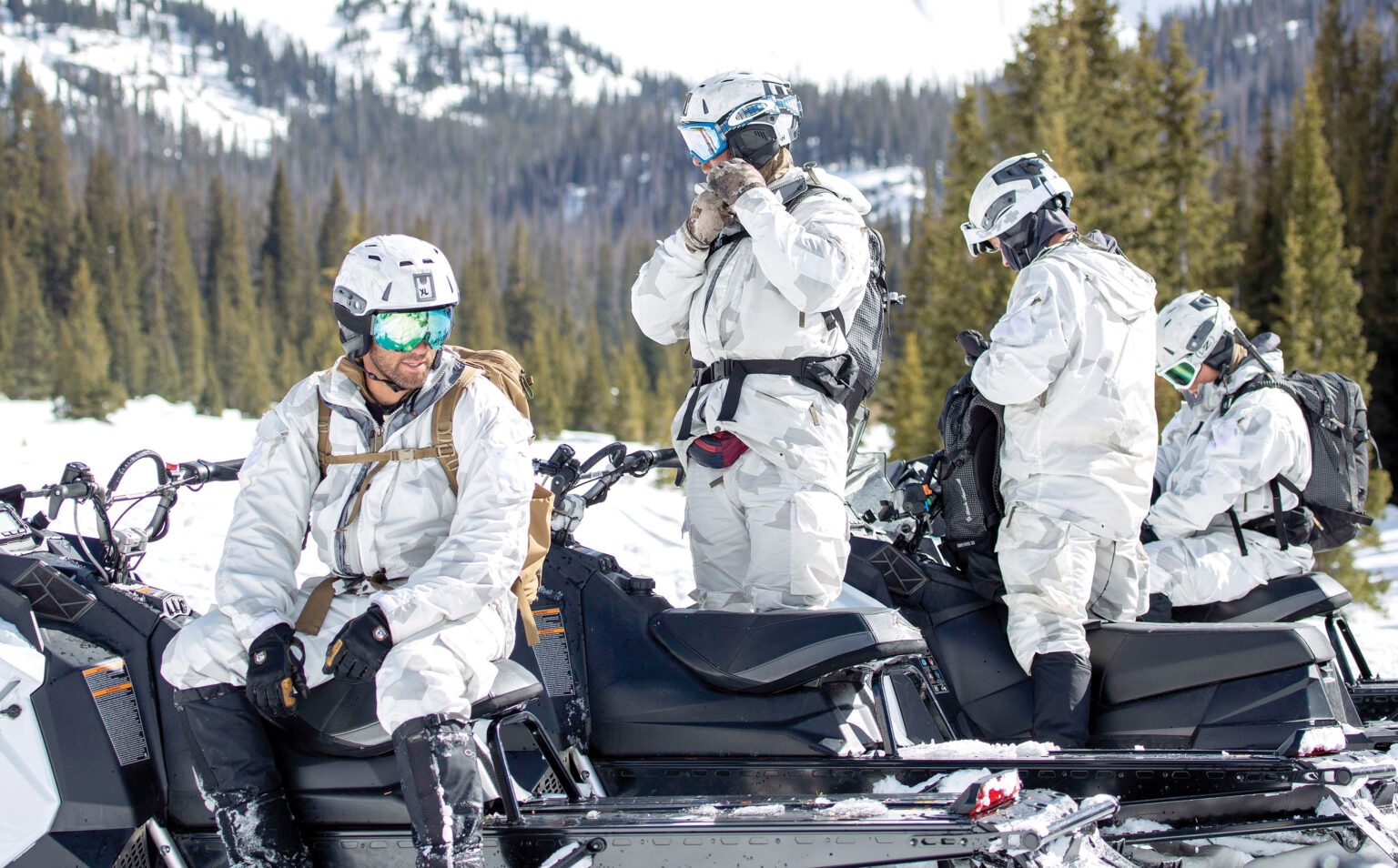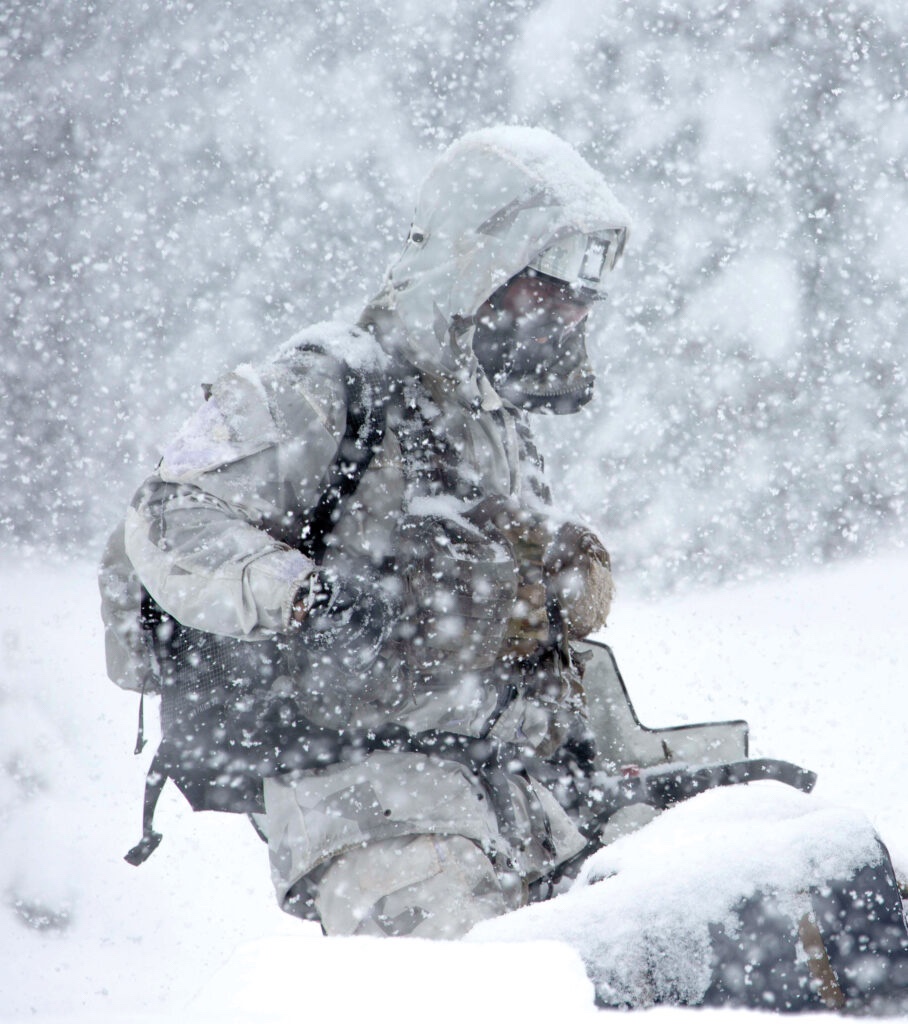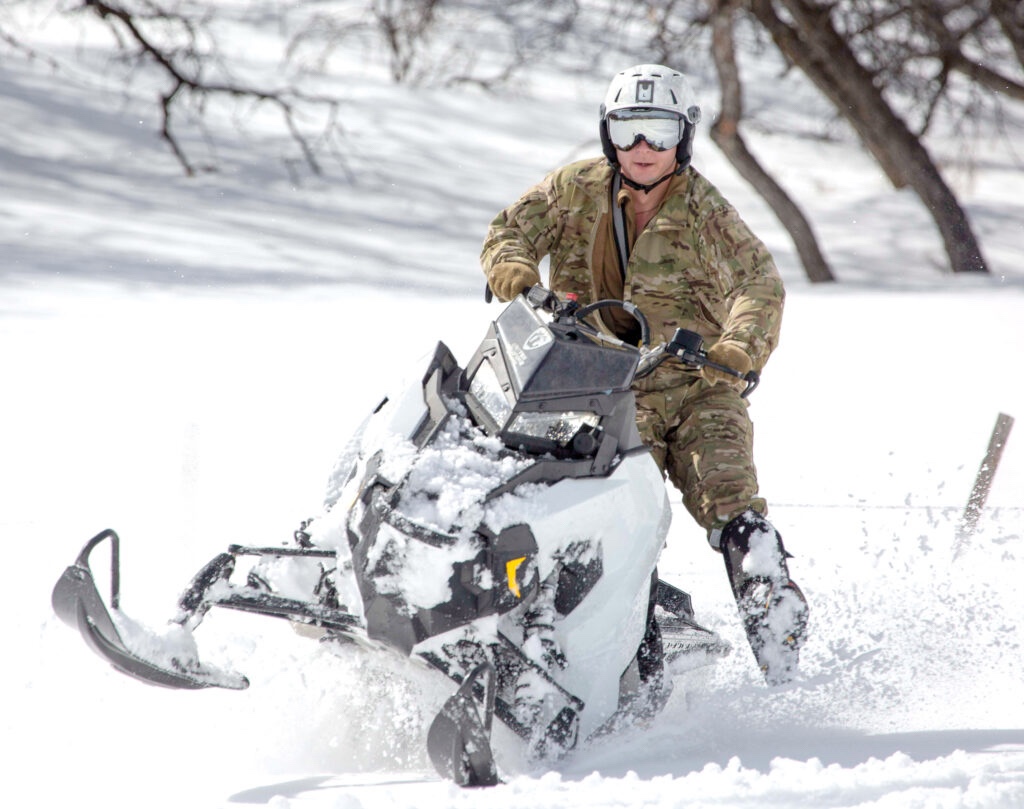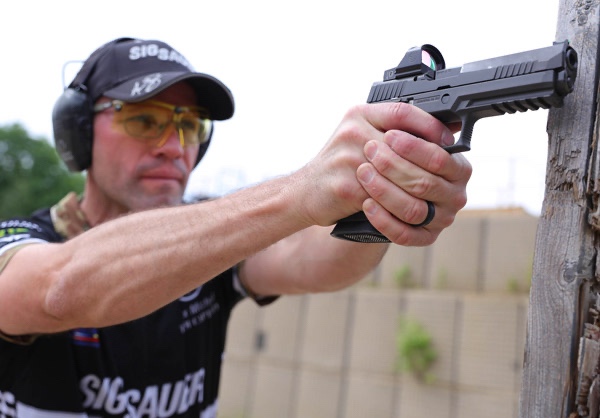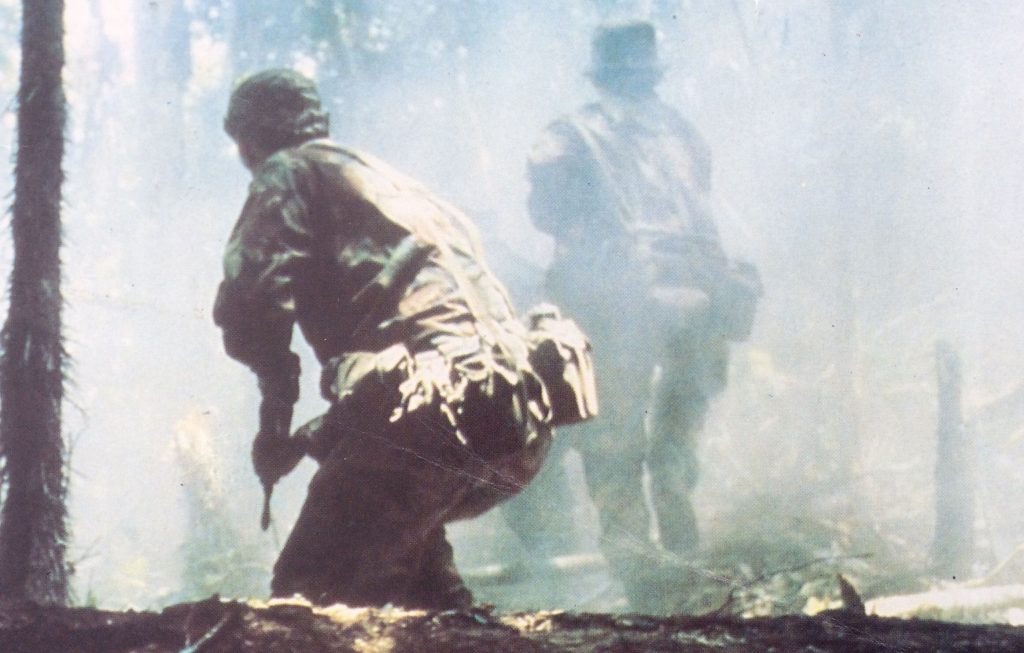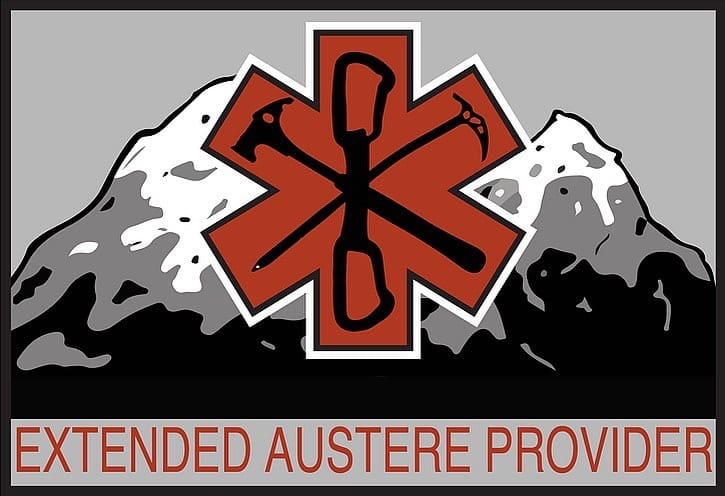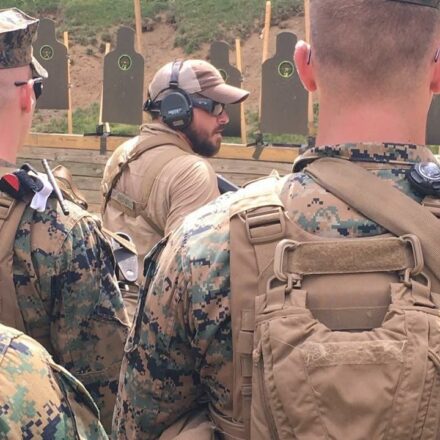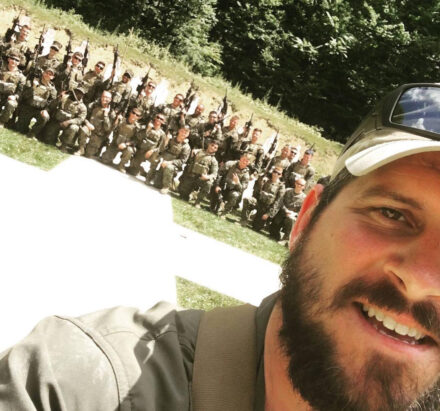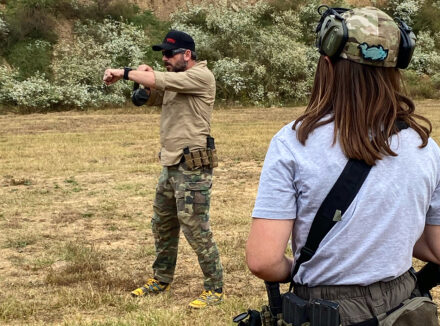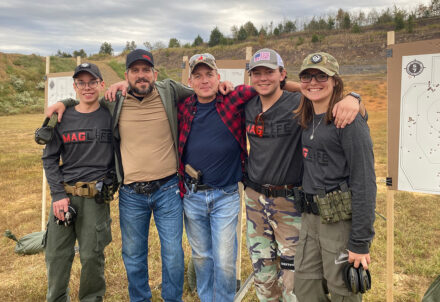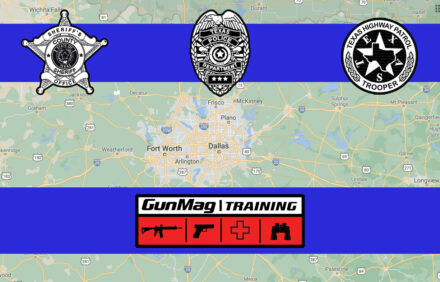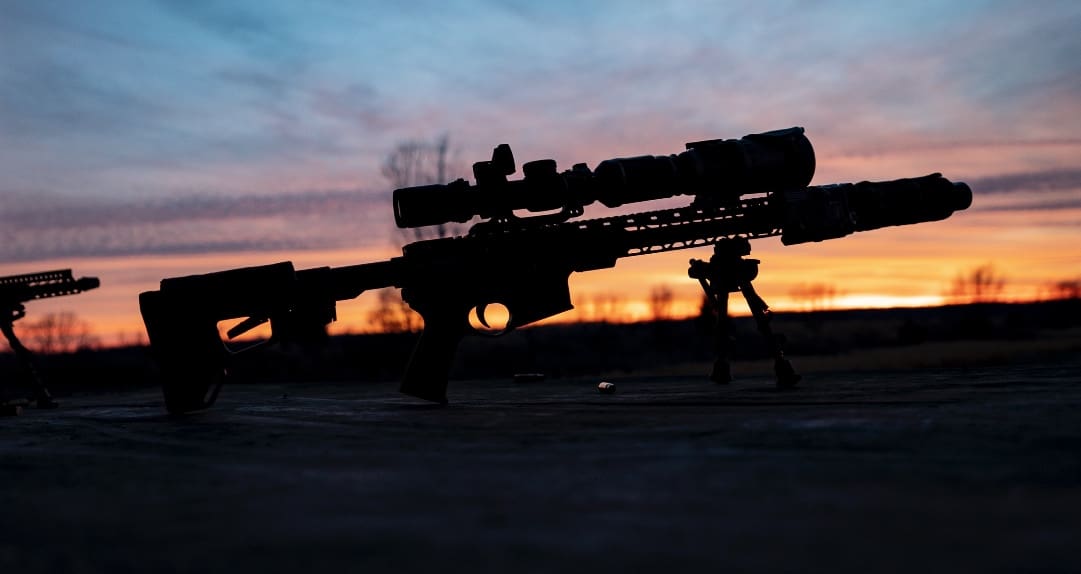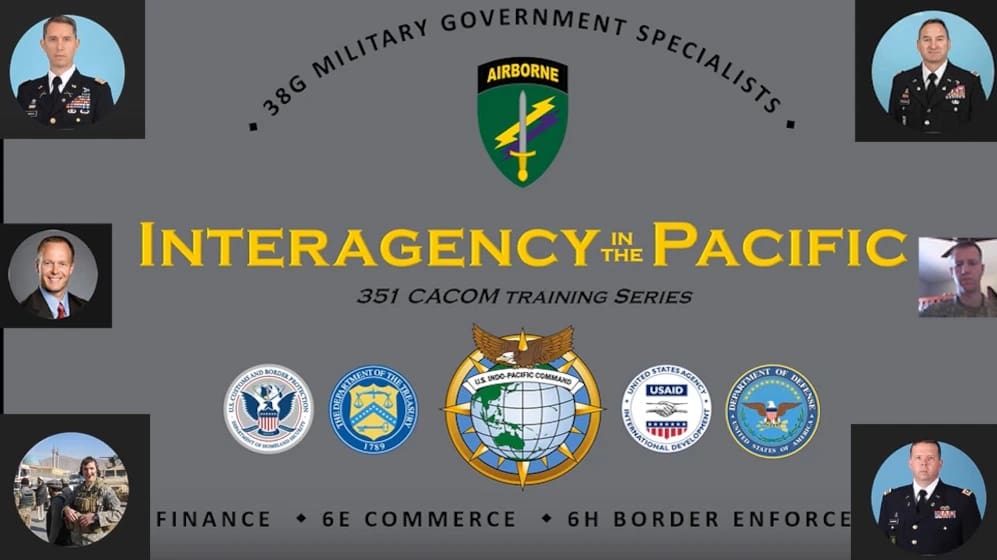
MOUNTAIN VIEW, CALIF. – Various Soldiers within the civil affairs community from across the U.S. participated in the ‘Interagency in the Pacific’ virtual training conducted on March 20, 2021. The virtual training, instructed by multiple U.S. government agency representatives, focused on the economic, security, and structural environment of a country within the operational area. This type of instruction enhances U.S. military forces’ holistic understanding of the cognitive environments in which they operate, it is instrumental to the success of the mission, and the wellbeing of the personnel on the ground. For civil affairs Soldiers, possessing the right information could be pivotal to future relationships with international partners. Moreover, Soldiers having the full perspective about a government can mean the difference between mission success or mission failure.
“The Interagency in the Pacific training was very good for the kinds of missions we perform. The insights into China’s belt and road investment strategy inform us of what our Asian partners see when they consider China’s overtures. The briefings from U.S. Customs and Border Protection taught us that some of our foreign partners have built their own customs and processes on U.S. models,” said Lt. Col. Anthony Alfidi, a participant of the training and a military intelligence Soldier with the 351st Civil Affairs Command out of Mountain View, Calif.
The training ranged from an in-depth review of how a financial system works in other countries to how specific security processes were in place to prevent drug trafficking across national borders, providing civil affairs Soldiers with the knowledge of what to look for while on mission to another country.
“I think that we need more interagency training,” said Alfidi, “civil affairs Soldiers may end up working with other USG officials at local levels, provincial levels, and national levels. CA practitioners need to know what the other agencies can accomplish.”
Alfidi mentioned how knowing more about commerce and treasury helps promote trade and investment with a country. He explained how commerce can sponsor trade missions for U.S. firms and treasury which can assist countries in making their budgeting systems more transparent. As a result, the country can possibly benefit through increased stability.
Alfidi also observed that well informed civil affairs Soldiers tend to be better equipped to function within their operational environment and be effective and efficient when operating within the given parameters of their mission, and training like the Interagency in the Pacific program are designed to promote this level of readiness.
“This training is valuable to civil affairs because no functional specialty such as public health, governance, infrastructure, rule of law, etc., exists in a vacuum. We must have a basic understanding of the other functional specialties and our civilian counterparts to be effective in the field, and execute a whole-of-government approach as doctrinally intended,” said Lt. Col. Leah Trapp, a participant and Soldier with the 322nd Civil Affairs Brigade. “For example, rule of law is the basis for any government, which then decides what policies to enact and fund, such as a national health system. In turn, the national health system relies on infrastructure, like clinics, roads to transport supplies and specimens for testing, laboratories, hospitals, etc.”
The better prepared, the higher success that a civil affairs unit will have on the ground when operating on foreign soil. Trapp would like to see this training expanded, formalized, and adopted by the Civil Affairs Command and Training and Doctrine Command to ensure civil affairs generalists and functional specialists have a mutual understanding of how to best employ functional specialists.
Lt. Col. Charles Arensman, economist with the 351st CACOM, stated that, to improve the functionality of civil affairs teams when deployed, the Interagency in the Pacific virtual training would assist in providing a baseline understanding for professional development among 38G personnel.
“The FxSp [functional specialties] is what we’re composed of, and for the last few months, our section’s chief, Col. Bradford Hughes, has tried to promote subject matter expertise within our teams. As an economist in the unit, I put this material together to give our personnel a baseline understanding on interagency economics of the Indo-Pacific command,” said Arensman.
Arensman coordinated with speakers from organizations which represented the whole of the government or this training and based on expertise. This is the information which primarily assists civil affairs personnel, or FxSp teams, during overseas missions.
“Most important thing to know is your partners to the left and to the right of you. The interagency perspective shows us who is out there and what they’re doing In the INDOPACOM,” said Arensman, “and all this is thanks to Col. Hughes, he has done an exceptional job shepherding and growing the professionalism of the FxSp through his leadership and efforts.”
The reason for this training and how or why it was initiated can best be answered by Maj. Dale Kooyenga, civil affairs officer with the 352nd CACOM and a member of the U.S. Army Civil Affairs and Psychological Operations Command (USACAPOC) Strategic Initiatives Group (SIG). This group is developing a 38G program while recruiting the nation’s top candidates by creating institutional alignments with universities and other organizations.
“About a year ago we started doing online training, in part because of the coronavirus but also in part to have a team of specialists that were geographically dispersed, operationally it made sense,” said Kooyenga. “We are trying to create training content that is unclassified and available to a wider audience.”
The SIG training group started about a year ago around February 2020 and is led and produced by 38Gs and or their partners in the civilian world. The training conducted is being recorded to develop a library of content which will then be made available to the civil affairs community and other interested parties.
“It was the cultural heritage team who got this initiative started, this team is the modern day ‘monuments men’ movie equivalent,” said Kooyenga, ”they started doing a lot of training virtually, initially the training was scheduled to be in person, but they soon changed it to a virtual training because of COVID.”
Some of the training that has been conducted includes training on money laundering, interagency cooperation, training on ‘The Hague Convention,’ and other training related specifically to civil affairs topics. But for 38Gs the ‘Interagency in the Pacific’ training is the first of its kind and it is critical to be able to operate while conducting civil affairs missions.
“It is not a mission that the department of defense or specifically USACAPOC can do on its own. It will take tremendous coordination across other U.S. government agencies and private sector partners to really understand and assess the situation and coordinate. It would not only be ineffective for U.S. personnel within the DOD to operate in a vacuum, it would actually be harmful to the overall mission,” said Kooyenga.
As stated by Kooyenga, the intent of these training sessions is to provide a database of quality information which will provide officers and non-commissioned officers with the insight on complex civil affairs missions. Moreover, civil affairs personnel should know that there are partners in other institutions available to coordinate with who may also provide insight on specific topics or areas.?
Story by Rosario Urquieta, 351st Civil Affairs Command
